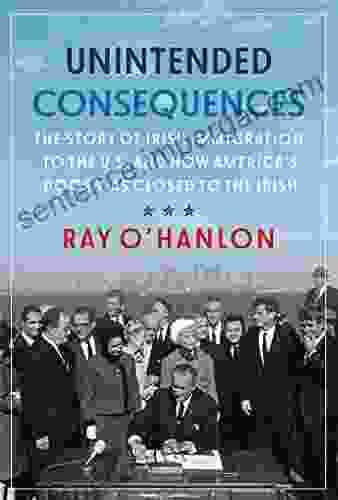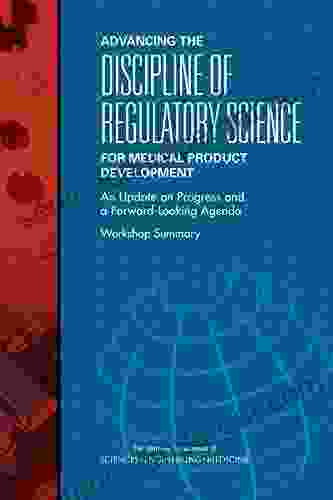The Irish in America: A History of Immigration and Exclusion

The Irish in America: A History of Immigration and Exclusion tells the story of the Irish people who came to America in search of a better life, and the challenges they faced along the way. From the first Irish immigrants who arrived in the early 17th century to the mass migration of the 19th century, the Irish have played a vital role in shaping American history and culture.
But the Irish experience in America has not always been easy. In the early years, Irish immigrants faced discrimination and prejudice from the Protestant majority. They were often seen as dirty, lazy, and violent. And as the number of Irish immigrants increased, so too did the anti-Irish sentiment.
4.5 out of 5
| Language | : | English |
| File size | : | 11921 KB |
| Text-to-Speech | : | Enabled |
| Screen Reader | : | Supported |
| Enhanced typesetting | : | Enabled |
| Word Wise | : | Enabled |
| Print length | : | 366 pages |
| Lending | : | Enabled |
In the 1830s and 1840s, the anti-Irish movement reached its peak. Irish immigrants were attacked in the streets, and Irish homes and businesses were burned down. In 1844, anti-Irish riots in Philadelphia left 13 people dead.
The anti-Irish sentiment eventually subsided, but the Irish continued to face discrimination in many areas of life. They were often denied jobs, housing, and education. And they were often the victims of violence and hate crimes.
In the late 19th and early 20th centuries, the Irish began to organize and fight for their rights. They formed labor unions, political organizations, and social clubs. And they gradually made progress in overcoming the discrimination they had faced.
Today, the Irish are one of the most successful immigrant groups in American history. They have made significant contributions to American society in all areas of life, from politics to business to the arts. And they have helped to make America a more diverse and vibrant nation.
The First Irish Immigrants
The first Irish immigrants to America arrived in the early 17th century. They were mostly Catholic refugees fleeing religious persecution in Ireland. These early immigrants settled in the colonies of Maryland, Pennsylvania, and New York.
The Irish immigrants who arrived in the 18th century were mostly economic migrants. They were looking for a better life in America, and they were willing to work hard to achieve it. These immigrants settled in all parts of the country, but they were particularly concentrated in the cities of Boston, New York, and Philadelphia.
The Irish immigrants who arrived in the 19th century were fleeing the Great Famine of 1845-1849. This famine was caused by a potato blight that devastated Ireland's potato crop. Over a million people died in the famine, and another million emigrated to America.
The Irish immigrants who arrived in the 19th century faced many challenges. They were often poor and uneducated. And they were often discriminated against because of their religion and their ethnicity. But they persevered, and they eventually made a significant contribution to American society.
The Anti-Irish Movement
The anti-Irish movement in America reached its peak in the 1830s and 1840s. This was a time of great social and economic change in America. The country was rapidly industrializing, and there was a growing influx of immigrants from Europe.
The anti-Irish movement was fueled by a number of factors, including:
- Economic competition: Irish immigrants were often willing to work for lower wages than native-born Americans. This led to resentment among some American workers.
- Religious prejudice: Many American Protestants were prejudiced against Catholics. They believed that Catholics were not loyal to the United States, and that they were trying to take over the country.
- Political power: Irish immigrants were beginning to gain political power in some cities. This led to fears among some Americans that the Irish would eventually control the country.
The anti-Irish movement manifested itself in a number of ways, including:
- Violence: Irish immigrants were often attacked in the streets. Irish homes and businesses were burned down. And in 1844, anti-Irish riots in Philadelphia left 13 people dead.
- Discrimination: Irish immigrants were often denied jobs, housing, and education. They were also often the victims of hate crimes.
- Political exclusion: Irish immigrants were often excluded from political participation. They were denied the right to vote, and they were rarely elected to public office.
The anti-Irish movement eventually subsided, but it left a lasting legacy of discrimination against Irish Americans.
The Irish Fight Back
In the late 19th and early 20th centuries, the Irish began to organize and fight for their rights. They formed labor unions, political organizations, and social clubs. And they gradually made progress in overcoming the discrimination they had faced.
One of the most important Irish organizations was the Ancient Free Download of Hibernians (AOH). The AOH was founded in 1836 as a fraternal organization for Irish immigrants. But it quickly became a powerful political force. The AOH fought for Irish rights in a number of areas, including voting rights, education, and job opportunities.
Another important Irish organization was the Irish Land League. The Irish Land League was founded in 1879 to fight for land reform in Ireland. The Land League was successful in getting the British government to pass a number of laws that improved the lives of Irish farmers.
The Irish also made progress in politics. In 1882, the first Irish-born American was elected to the U.S. Senate. And in 1884, the first Irish-born American was elected to the U.S. House of Representatives.
The Irish continued to make progress in the 20th century. They became increasingly integrated into American society, and they made significant contributions to all areas of American life.
The Irish Today
Today, the Irish are one of the most successful immigrant groups in American history. They have made significant contributions to American society in all areas of life, from politics to business to the arts. And they have helped to make America a more diverse and vibrant nation.
The Irish experience in America is a story of perseverance and success. Despite facing many challenges, the Irish have overcome discrimination and prejudice to become one of the most successful immigrant groups in American history. Their story is a reminder that anything is possible if you have the courage to dream and the determination to succeed.
4.5 out of 5
| Language | : | English |
| File size | : | 11921 KB |
| Text-to-Speech | : | Enabled |
| Screen Reader | : | Supported |
| Enhanced typesetting | : | Enabled |
| Word Wise | : | Enabled |
| Print length | : | 366 pages |
| Lending | : | Enabled |
Do you want to contribute by writing guest posts on this blog?
Please contact us and send us a resume of previous articles that you have written.
 Book
Book Novel
Novel Page
Page Chapter
Chapter Text
Text Story
Story Genre
Genre Reader
Reader Library
Library Paperback
Paperback E-book
E-book Magazine
Magazine Newspaper
Newspaper Paragraph
Paragraph Sentence
Sentence Bookmark
Bookmark Shelf
Shelf Glossary
Glossary Bibliography
Bibliography Foreword
Foreword Preface
Preface Synopsis
Synopsis Annotation
Annotation Footnote
Footnote Manuscript
Manuscript Scroll
Scroll Codex
Codex Tome
Tome Bestseller
Bestseller Classics
Classics Library card
Library card Narrative
Narrative Biography
Biography Autobiography
Autobiography Memoir
Memoir Reference
Reference Encyclopedia
Encyclopedia Jeannie Henderson
Jeannie Henderson Jamie Susskind
Jamie Susskind James Edge
James Edge Janet Mancini Billson
Janet Mancini Billson James P Delgado
James P Delgado James Walsh
James Walsh James Bernard Murphy
James Bernard Murphy Jeannine L Pedersen
Jeannine L Pedersen Janet Bautista Smith
Janet Bautista Smith James T Moodey
James T Moodey Javier De Prada Pareja
Javier De Prada Pareja Jay Belsky
Jay Belsky Jan Faye
Jan Faye James J Gigantino Ii
James J Gigantino Ii James E David
James E David Jakub Zdebik
Jakub Zdebik Jan Pryor
Jan Pryor James R Voelkel
James R Voelkel Jan Wilson
Jan Wilson James D Schmidt
James D Schmidt
Light bulbAdvertise smarter! Our strategic ad space ensures maximum exposure. Reserve your spot today!

 Billy PetersonGuide to Making Money Managing Your Intellectual Property: Understanding The...
Billy PetersonGuide to Making Money Managing Your Intellectual Property: Understanding The...
 Josh CarterGet to Grips with What You're Drinking: Unveil the Secrets of Your Favorite...
Josh CarterGet to Grips with What You're Drinking: Unveil the Secrets of Your Favorite... Brian WestFollow ·2.9k
Brian WestFollow ·2.9k Italo CalvinoFollow ·13.6k
Italo CalvinoFollow ·13.6k Holden BellFollow ·16.8k
Holden BellFollow ·16.8k Alexander BlairFollow ·16.6k
Alexander BlairFollow ·16.6k Carl WalkerFollow ·19.2k
Carl WalkerFollow ·19.2k Ralph TurnerFollow ·9.8k
Ralph TurnerFollow ·9.8k Ian PowellFollow ·15.3k
Ian PowellFollow ·15.3k Doug PriceFollow ·14.7k
Doug PriceFollow ·14.7k

 Jacob Foster
Jacob FosterPrinciples and Persons: The Legacy of Derek Parfit
Derek Parfit's 1984 book,...

 Leo Mitchell
Leo MitchellPartners For Life: Raise Support For Your Missionary Work...
Are you a missionary or ministry leader...

 Blake Kennedy
Blake KennedyOn Desperate Ground: A Gripping Account of World War II's...
Hampton Sides' "On...

 Duane Kelly
Duane KellyCriminal Minds Sociopaths Serial Killers And Other...
In the realm of criminology,...

 Craig Blair
Craig BlairHome Repair: The Ultimate Guide to Fix, Maintain, and...
Welcome to the...

 Elmer Powell
Elmer PowellThe Organic Grower Guide to Mycorrhizae Science for...
Unlock the Secrets of Soil...
4.5 out of 5
| Language | : | English |
| File size | : | 11921 KB |
| Text-to-Speech | : | Enabled |
| Screen Reader | : | Supported |
| Enhanced typesetting | : | Enabled |
| Word Wise | : | Enabled |
| Print length | : | 366 pages |
| Lending | : | Enabled |








